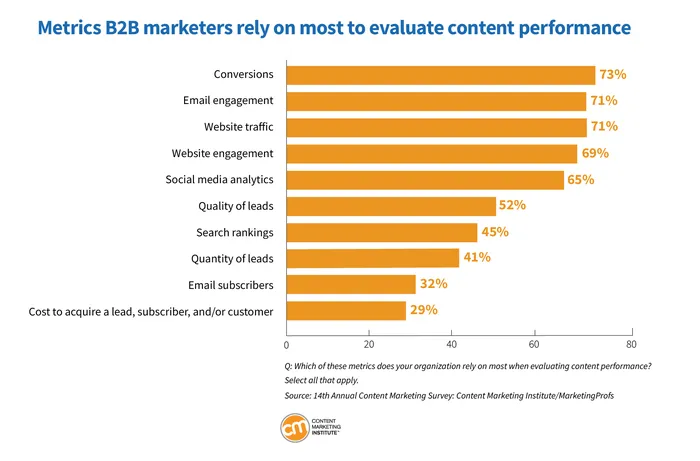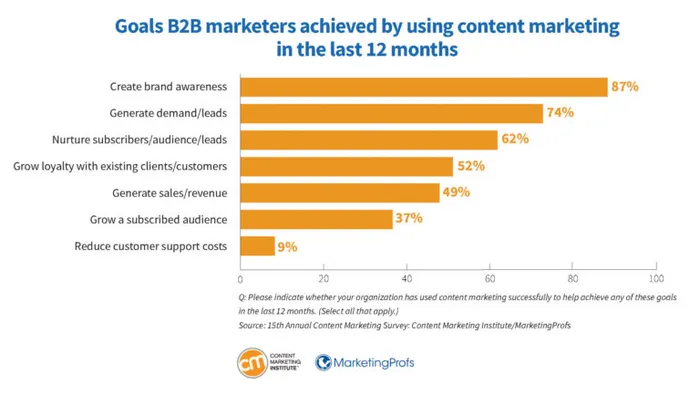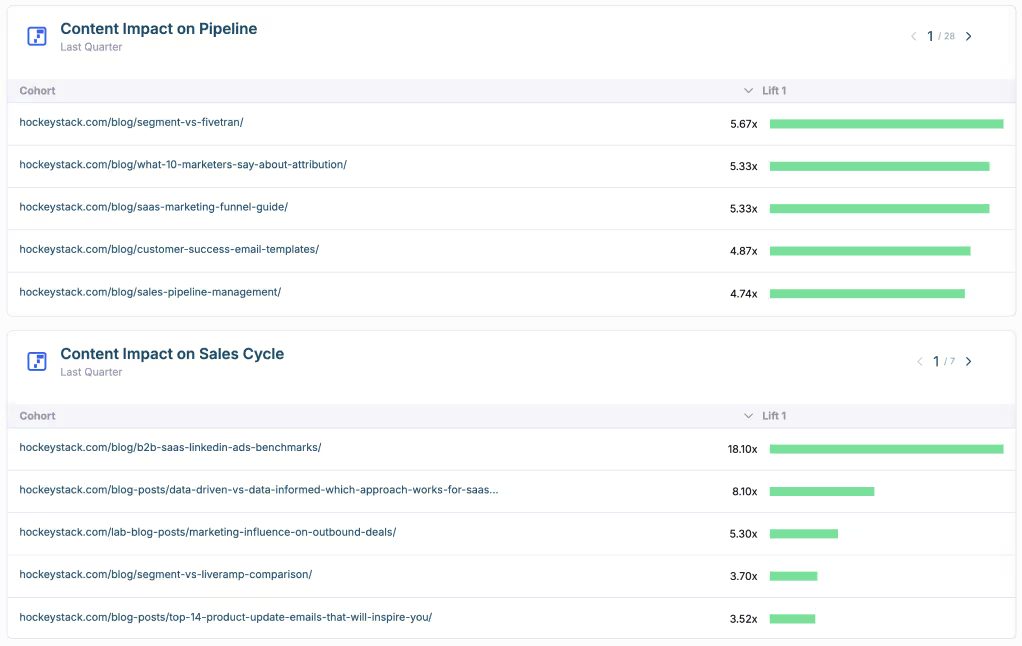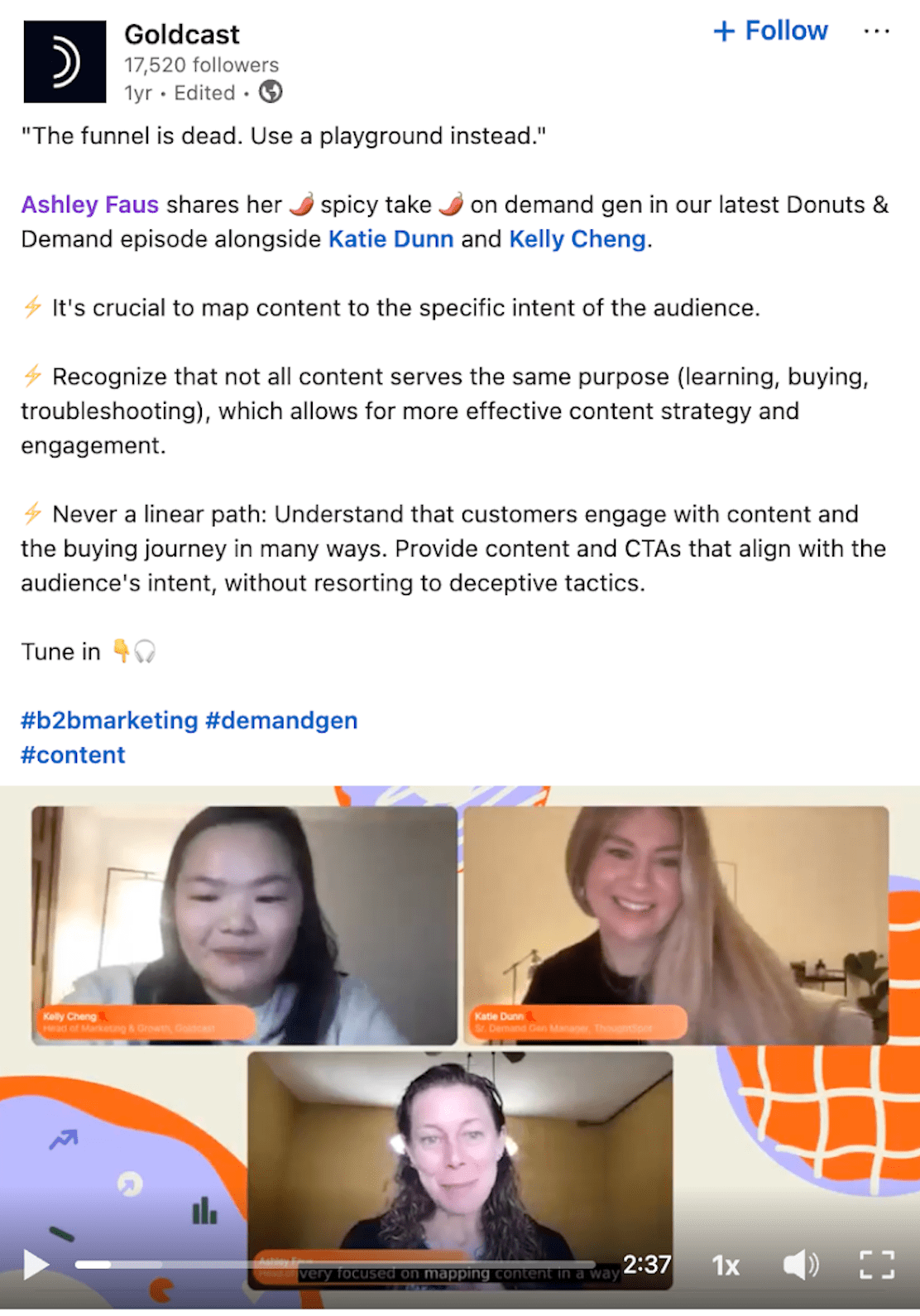Measure & Maximize Content Marketing ROI [Full Guide w/ Free Calculators]

Key Takeaways:
- Define Clear Metrics for Content Success: Focus on metrics like traffic, lead generation, conversions, and brand awareness, based on the content’s role in the buyer’s journey.
- Choose the Right Attribution Model: Use first-touch, last-touch, or multi-touch attribution to track content’s contribution across the funnel and understand its true impact.
- Leverage Predictive Analytics: Use historical data to forecast content performance, prioritize strategies with the best chance of success, and make data-driven decisions.
- Benchmark Performance Against Industry Standards: Compare your content’s performance with industry averages or competitors to ensure your efforts are driving positive ROI.
- Tie Content Marketing ROI to Business Objectives: Align your content strategy with company growth goals, such as revenue generation, customer retention, and market expansion.
- Use Tangible Metrics to Prove Value: Demonstrate content’s impact on pipeline acceleration and revenue, rather than just vanity metrics like traffic and views.
- Present Data Visually for Clarity: Visual dashboards and clear reports help communicate content’s value to stakeholders and make it easier to identify top-performing content.
- Avoid Common ROI Measurement Mistakes: Steer clear of focusing on short-term metrics, attribution overload, poor data quality, and failing to factor in total content costs.
You’re stuck between two worlds. On one side, the creative urge to tell meaningful stories that build brand trust. On the other, a relentless push to tie every word to revenue.
This is the battleground of content marketing return on investment (ROI). And without the right tools, you’ll be pulled in every direction by skeptical executives, disconnected platforms, and the silent fear that your content just isn’t landing.
But you can measure the impact of content. You just need to shed the lie that content can’t be quantified—and confront the ghost of past efforts that felt like a waste.
This guide will help you decode ROI step by step, with calculators, step-by-step breakdowns, and the mindset shift required to own the value you create.
How To Measure and Predict ROI for Your Content Marketing Strategy
How To Explain Content Marketing ROI to Win (or Keep) Buy-In
Present Data Clearly
Even the best results fall flat if they’re buried in spreadsheets or vague summaries. Clear, visual reporting helps stakeholders see the impact of content. That’s why visual dashboards are essential for communicating SEO ROI and the ROI of blogging.
Take HockeyStack’s Content Influence Dashboard which they created with Bridget Poetker, Creative Partner, as an example.
It includes:
- Top-performing content from the last quarter
- Traffic breakdown by source
- Pipeline influenced by content
- Number of leads touched by content
- Content’s effect on sales cycle length
By organizing performance data into visuals—bar charts, pie charts, funnels—it’s easier to connect the dots.
A marketing lead can quickly spot which content is moving deals forward. A founder can see how content shortens the sales cycle. And a CFO can tie top-funnel traffic to real pipeline value.
This kind of clarity helps teams double down on what’s working, cut what isn’t, and make faster, more confident decisions.
Storytelling
When presenting content ROI, pair your metrics with real examples.
For example, instead of just saying, “Our webinar campaign influenced $250K in pipeline,” say, “After publishing a webinar recap and sending targeted follow-ups, we booked four demos within one week—two of which turned into closed deals.” Now the impact is tangible.
Storytelling also builds credibility when you connect outcomes to context. It’s one thing to report that a blog influenced 30% of closed-won deals last quarter—but it’s far more compelling to explain how it did that.
When you can walk stakeholders through a specific journey—from concept to asset to revenue—that’s when buy-in shifts from temporary approval to long-term support.
As more companies turn to AI-driven tools to assist in their marketing, TrustRadius findings show that 80% of buyers trust AI-generated content, but only if they can verify it through other channels. This is where the need to present a clear ROI picture becomes crucial.
When seeking buy-in for your content marketing strategy, connect content marketing activities directly to business outcomes like customer acquisition, customer retention, and revenue growth. Focus on the ROI of campaigns that influence high-value actions, such as lead generation or demos—showing that your email marketing or social media posts aren’t just generating traffic but also contributing to pipeline acceleration and sales conversion.
The ROI calculation should include both direct and attributable ROI from these marketing efforts for maximum ROI.









